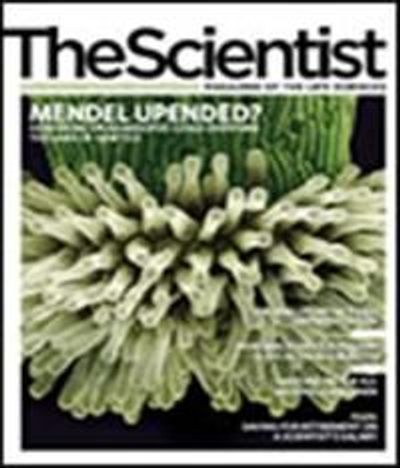Some young biologists might think that funding from the National Institutes of Health has never been harder to get than it is now, but those of us who have been around for a while can remember a period in the early 1990's when NIH funding seemed to all but disappear. I'm talking about 7% paylines at some institutions. I went through a period where I submitted 12 unsuccessful proposals in a row. Somehow I survived along with many of my colleagues, so excuse me if I don't quite feel yet that the apocalypse is upon us. At the time, however, many of us felt exactly that way. We called the dramatic drop in funding "the asteroid strike," in honor of the recently discovered impact site of the asteroid thought to be responsible for the extinction of the dinosaurs at the end of the Cretaceous period.
Comparing the drop in NIH funding to a mass-extinction event was made only half in jest, but there were similarities. The extinction event caused by the asteroid was not a direct result of the impact, but of the reduction in sunlight resulting from its cloud of debris. This was postulated to cause the collapse of the food chain, resulting in an estimated 70% reduction in biological diversity.
The sudden drop in NIH funding in the early 1990's had a similar effect. The previous diversity in the NIH research portfolio was reduced to mostly molecular biology and some well-entrenched research areas. Research groups on the fringes - "old-fashioned" research, as in physiology, as well as some newer fields, such as mathematical modeling - found it almost impossible to obtain funding.
I remember asking an NIH research administrator how I could improve my priority score when the evaluation sheet found no fault in my research plan. I was told that the only proposals being funded were from Nobel Prize winners or investigators cloning disease genes. Since my proposal was on modeling endocytosis, I was out of luck.
In essence, the asteroid strike shifted the available ecological niches. Specialized organisms that depended on the lost environments could not manage and became extinct. Those that were robust and flexible lived on, as did others in the few niches that were not destroyed. Although I know a number of scientists who lost their academic jobs during the funding shortfall, I survived, along with many of my colleagues. And we did so by inadvertently following the lesson of cockroaches.
These insects have thrived over the last several hundred million years by being hardy and able to adapt to almost any environment and food source. Instead of being specialists, they are generalists. Taking a similar strategy, I stopped applying for NIH grants in just a single area of research. I obtained a National Science Foundation grant, even though I was in a medical school. I then got a US Army grant, and partnered with other investigators on a gene therapy grant. I even wrote software for BioRad laboratories in my spare time in exchange for lab equipment and supplies. Soon, I had more funding than before and, more importantly, in a variety of different areas of research. This not only helped me survive the tight NIH finding, but also opened my mind to a variety of different research areas.
A recent article from the National Bureau of Economic Research suggests that NIH research grants do not appear to have a substantial impact on a scientist's total publications or citations.
The current period of funding hardship will pass just as it did before, but it will probably be followed by another downturn in the future. By expanding your research horizons into new areas, you can increase your chance of seeing, and surviving, that one as well.
Steven Wiley is a Pacific Northwest National Laboratory Fellow and director of PNNL's Biomolecular Systems initiative.
1. B. Jacob, L. Lefgren, "The impact of research grant funding on scientific productivity," National Bureau of Economic Research, Working Paper No. 13519, October 2007. Available online at www.nber.org/papers/w13519Interested in reading more?




